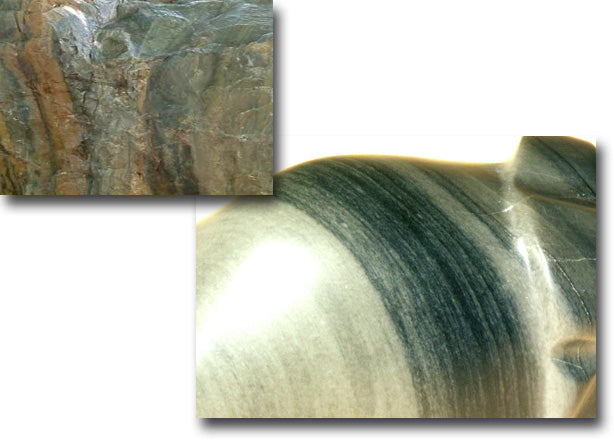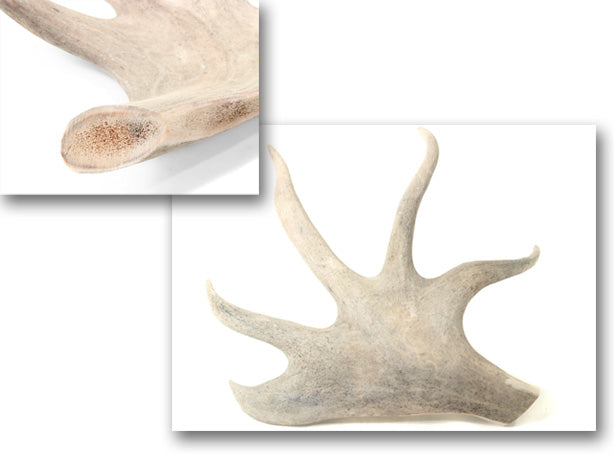
Steatite
The term Steatite is generally interchangeable with the term Soapstone although it may imply a slightly greater hardness than is associated with the term soapstone. This greater hardness of Steatite may be due to other minerals in the stone other than talc, or a crystal structure that is finer or denser.
Characteristics :
• Color is grey and white to almost silver
• 1 to 3 on the hardness scale

Serpentine
Serpentine is classified as a group of related minerals in the Hydrous Magnesium Iron Silicate family (similar to Talc and Chlorite) and can have a hardness ranging from 3 to 4.5. Serpentine often incorporates inclusions, which give the stone its unique color variation.
Characteristics :
• Color is olive green, yellow or golden, brown, or black
• 3 to 4.5 on the hardness scale

Argillite
A non-fissile variety of shale or slate. A sedimentary rock formed predominantly from a mixture of clay and other minerals. Its extremely fine grain is known to take excellent detail in carving.
Characteristics :
• Color is grey to black, but many other colors are known
• 2.5 to 4.5 on the hardness scale

Caribou Antler
Unlike other members of their species like the moose or deer, both male and female caribou grow antlers. Antlers are shed annually and are usually soft and spongy during their growth, but in the last month before shedding, the antlers will calcify and become hard bone.
Sculptors will use all parts of the antler to make artwork, but will mostly carve the surface in the style of bas relief. Often they will us antlers to make small parts for stone sculptures, such as tusks for walruses, tools and harpoons for hunters, or drums for drum dancers, for example.
